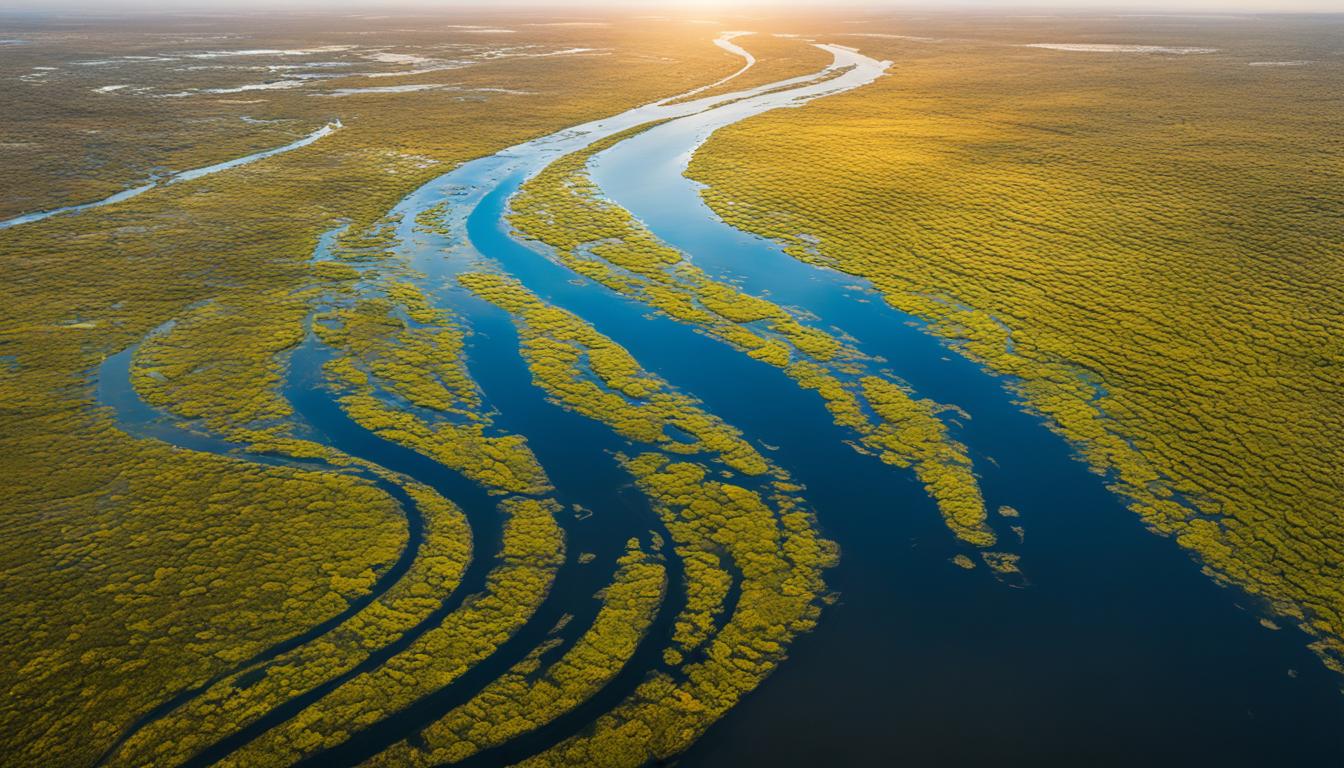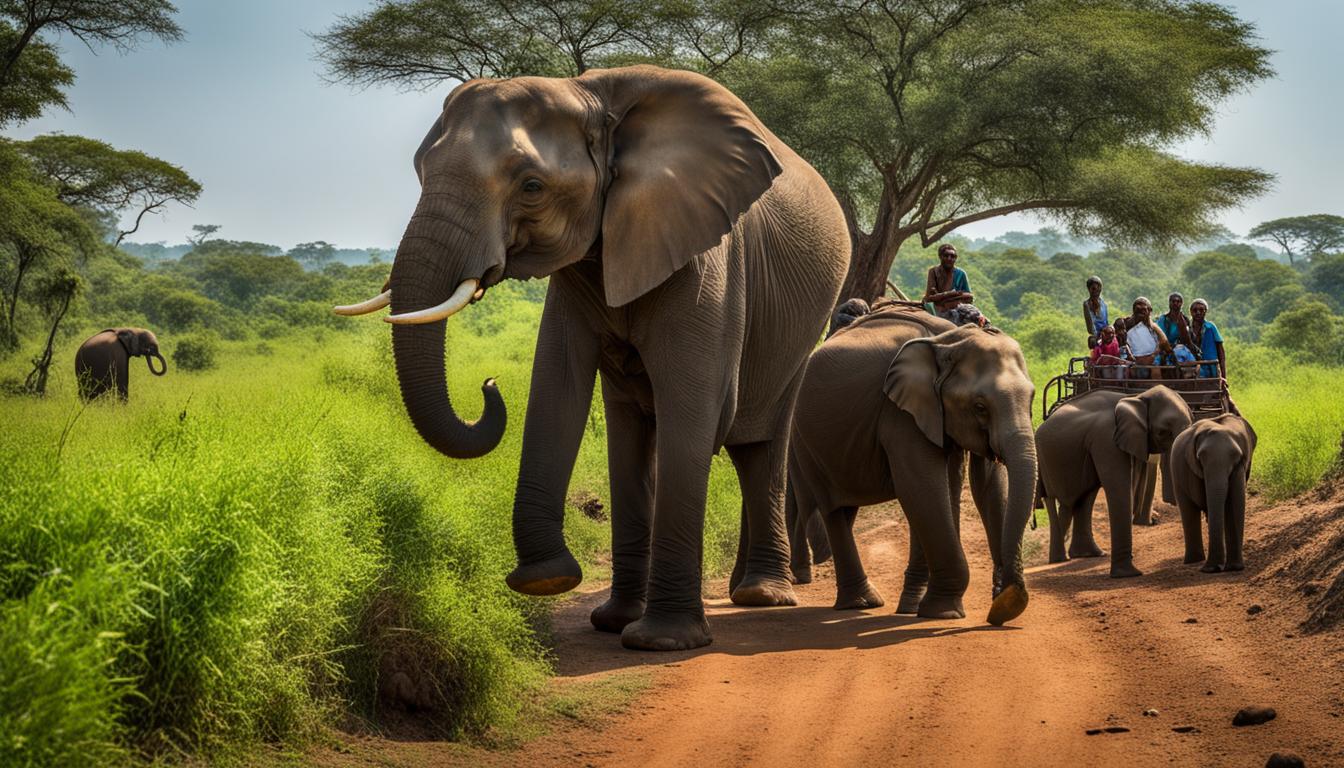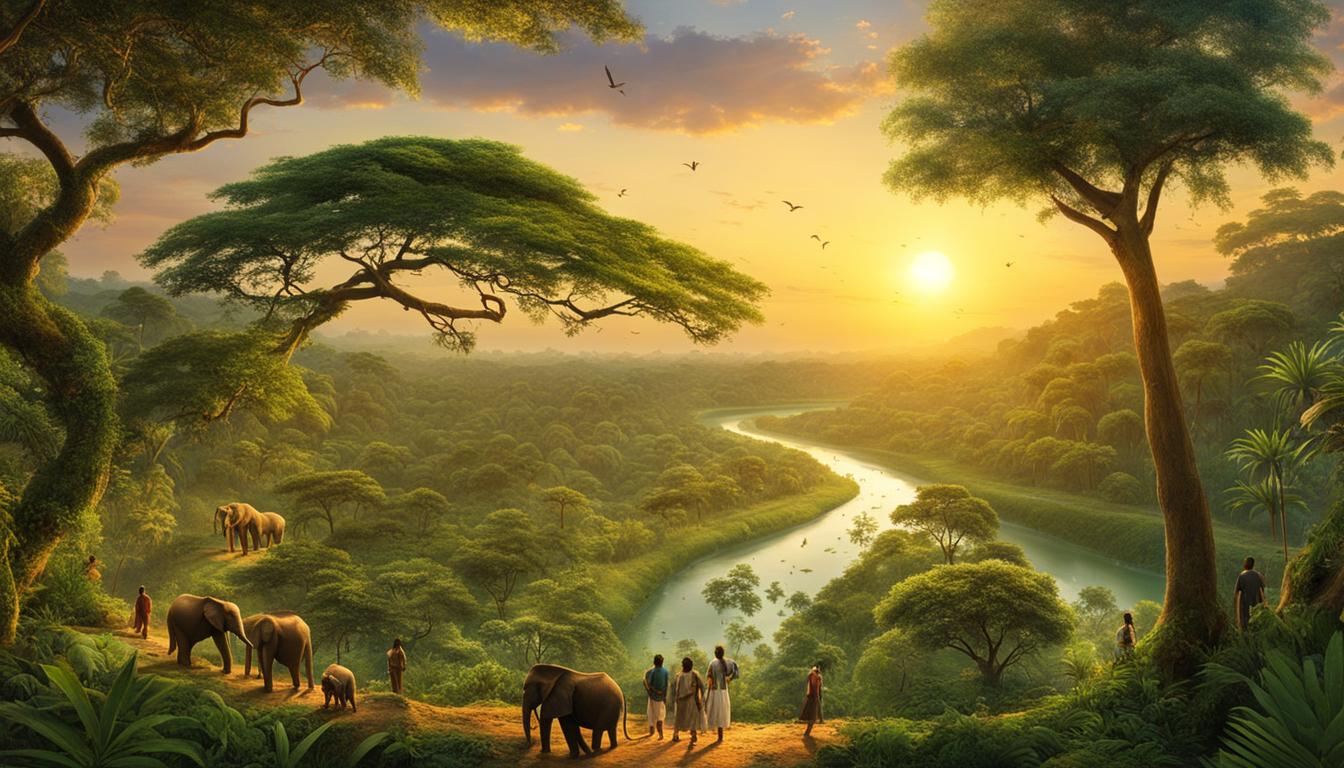Tourism & Entertainment
The Pinnacle of Nature Tours: Opulent Wildlife Encounters in Remote Sanctuaries!
Embark on the ultimate nature tour experience with opulent wildlife encounters in remote sanctuaries. These tours offer an unparalleled opportunity to witness and engage with wildlife in their natural habitats. Explore untouched wilderness and indulge in luxury accommodations, creating unforgettable memories of close encounters with majestic animals.
Key Takeaways:
- Opulent wildlife encounters in remote sanctuaries provide a unique opportunity to engage with animals in their natural habitats.
- Exploring untouched wilderness offers a truly immersive nature tour experience.
- Luxury accommodations enhance the overall comfort and enjoyment of the wildlife safari.
- Encountering majestic animals up close creates unforgettable memories.
- Choose a nature tour that combines opulence and wildlife encounters for a truly exceptional experience.
Discover the Serengeti: An Authentic Wildlife Safaris and Animal Encounters Experience
The Serengeti is a world-renowned destination for wildlife safaris and animal encounters. Experience the awe-inspiring Great Migration, where millions of wildebeest, zebras, and other herbivores traverse the plains in search of greener pastures. Witness the predators of the Serengeti, including lions, leopards, and cheetahs, in their natural habitat. Plan your visit to coincide with the seasonal patterns of the Serengeti for optimal wildlife viewing opportunities.
The Great Migration: A Dance of Millions
The Great Migration is a natural spectacle that occurs in the Serengeti, where millions of wildebeest, zebras, and other herbivores undertake a treacherous journey in search of food and water. Witness this incredible dance of millions as they traverse vast distances, braving predators and challenging terrains. The Great Migration is a must-see experience for wildlife enthusiasts.
Big Cat Diaries: Predators of the Plains
The Serengeti is home to a thriving population of big cats, including lions, leopards, and cheetahs. Follow their fascinating stories and observe their hunting strategies as they navigate the plains in search of prey. Learn about the unique behaviors and characteristics of these majestic predators and witness their power and grace up close.
Seasonal Serengeti: Timing Your Visit for Optimal Wildlife Viewing
Timing your visit to the Serengeti is crucial for optimal wildlife viewing opportunities. The park experiences distinct seasons, each offering different wildlife encounters. Plan your visit during the Great Migration to witness the incredible sight of millions of animals on the move. Consider the seasonal patterns and the presence of specific wildlife species to enhance your Serengeti experience.
| Season | Wildlife Encounters |
|---|---|
| Dry Season (June – October) | – Witness the Great Migration in action – The plains are drier, making it easier to spot wildlife – Predators are more active, increasing the chances of sightings |
| Wet Season (November – May) | – Lush green landscapes offer stunning scenery – Birdlife flourishes with the arrival of migratory species – Baby animals are born, adding to the charm of the safari experience |
Exploring the Okavango Delta: Botswana’s Pristine Safari Adventure
Navigating the Waterways: Mokoro Trips with the Locals
Embark on a unique and immersive safari adventure in the Okavango Delta, one of Botswana’s most iconic destinations. The Okavango Delta is a vast maze of waterways, dotted with lush islands and teeming with wildlife. To truly experience the magic of this pristine wilderness, take a mokoro trip with the locals.
A mokoro is a traditional dugout canoe used by the locals for transportation on the delta’s waterways. Glide through the calm channels and lagoons, surrounded by the untouched beauty of the Okavango Delta. Local guides, with their intimate knowledge of the area, will expertly navigate the waterways, revealing hidden gems and ensuring an authentic and immersive experience.
As you silently paddle through the channels, you will have the opportunity to encounter a wide variety of wildlife, including elephants, hippos, crocodiles, and colorful bird species. Listen to the sounds of nature, breathe in the fresh air, and immerse yourself in the tranquil ambiance of this extraordinary ecosystem.
Elephants and Echoes of the Kalahari
The Okavango Delta is renowned for its vast herds of elephants, which have found refuge in this pristine wilderness. These majestic creatures roam freely, leaving behind echoes of their presence in the Kalahari’s untamed landscapes.
Witnessing elephants in their natural habitat is a truly humbling experience. Marvel at their size, grace, and social interactions as you observe them from a safe distance. Listen to the rumbling calls, witness the playful behavior of the young ones, and gain a deeper appreciation for these intelligent and gentle giants.
The Kalahari, with its sweeping vistas and rich biodiversity, forms the backdrop for your elephant encounters. Immerse yourself in this ancient desert, known for its red sands and vast plains. Explore the Kalahari’s diverse ecosystems, from expansive grasslands to sparse woodlands, and embrace the untamed beauty of this wild frontier.
Chobe National Park: Where the Wild Things Roam
No safari adventure in Botswana would be complete without a visit to Chobe National Park, a veritable paradise where the “wild things” roam freely. Located in the northeast corner of the country, Chobe is home to an incredible concentration of wildlife and offers a truly unforgettable safari experience.
Embark on thrilling game drives and boat safaris along the Chobe River, witnessing the abundant wildlife that calls this park home. Marvel at the sight of herds of elephants bathing and crossing the river, explore the dense vegetation in search of elusive predators such as lions and leopards, and observe graceful antelope and a myriad of bird species.
The vast landscapes of Chobe National Park stretch as far as the eye can see, encompassing floodplains, woodlands, and seasonal marshes. Each area offers unique opportunities for wildlife encounters, adding to the allure and diversity of this remarkable wilderness.

Guided Safaris in Natural Habitats: Beyond the Big Five
Embark on guided safaris that take you beyond the iconic Big Five and into the fascinating world of rare and unique species. These safaris offer a chance to explore natural habitats and encounter wildlife that often goes unnoticed. Expand your wildlife encounters beyond the well-known animals and discover the hidden gems of the animal kingdom.
On these guided safaris, you’ll have the opportunity to encounter elusive leopards, endangered rhinos, and a variety of unique bird species. Delve into the lesser-known areas and witness the beauty and diversity of these rare creatures in their natural habitat. It’s a chance to expand your knowledge and appreciation for the rich biodiversity that thrives in these natural ecosystems.
Rare Sights: Finding the Lesser-Known Species
Guided safaris in natural habitats provide a unique opportunity to witness and appreciate the rare and lesser-known species that inhabit these areas. With expert guides leading the way, you’ll have the best chances of spotting these elusive creatures and learning about their behaviors and conservation status.
Imagine catching a glimpse of a leopard stealthily moving through the trees or capturing the graceful flight of a rare bird species. These rare sights will create lasting memories and deepen your understanding of the incredible diversity of life in these natural habitats.
Conservation Efforts: Safeguarding Biodiversity
Conservation efforts play a crucial role in safeguarding the biodiversity of these natural habitats. Guided safaris not only offer thrilling wildlife encounters but also contribute to ongoing conservation initiatives. By participating in these safaris, you support habitat preservation and wildlife protection, helping to create sustainable environments for a wide range of species.
Learn about the conservation efforts being undertaken to preserve these natural habitats and the species that call them home. Understand the importance of responsible tourism in maintaining the delicate balance of ecosystems and ensuring the long-term survival of rare and endangered species.
| Benefits of Guided Safaris in Natural Habitats | Conservation Efforts |
|---|---|
| Opportunity to encounter rare and unique species | Promote habitat preservation |
| Expand wildlife encounters beyond the Big Five | Contribute to wildlife protection |
| Learn about lesser-known creatures and their behaviors | Safeguard biodiversity |
Ethical Wildlife Encounters: Respecting Nature’s Boundaries
When it comes to wildlife encounters, it is essential to prioritize ethical practices that respect the well-being of animals and the preservation of their natural habitats. Responsible tourism plays a crucial role in ensuring sustainable wildlife experiences for future generations.
At the heart of ethical wildlife encounters is the understanding that we are guests in the animals’ homes. Respecting nature’s boundaries means observing animals from a safe distance, without causing disturbance or altering their behavior. By minimizing our impact, we can create opportunities for authentic and meaningful interactions while safeguarding the welfare of the wildlife.

Conservation lies at the core of ethical wildlife encounters. By supporting nature conservation initiatives, we contribute to the long-term preservation of ecosystems and biodiversity. As responsible travelers, we have the power to make a positive impact on the natural world.
Responsible tourism practices, such as choosing eco-friendly accommodations and participating in guided tours led by knowledgeable guides, allow us to explore wildlife habitats without causing harm. These experiences enable us to learn about the delicate balance of nature and appreciate the beauty of the natural world.
By embracing ethical wildlife encounters and responsible tourism, we ensure that future generations can continue to experience the wonders of nature and the incredible diversity of wildlife. Together, let’s explore, learn, and protect the precious resources of our planet.
Photography with a Purpose: Capturing Wildlife Through the Lens
Capture the beauty of wildlife through the lens by combining wildlife photography with a purpose. Whether you are a photography enthusiast or a professional, wildlife photography offers a unique opportunity to document and raise awareness about the incredible diversity of life in our natural world. By capturing compelling images, you can play a vital role in promoting wildlife conservation and fostering a deeper appreciation for the importance of protecting these precious creatures and their habitats.
The Art of Patience: Waiting for the Perfect Shot
Patience is key when it comes to wildlife photography. Animals move at their own pace, and capturing the perfect moment requires waiting and observing their behavior. Take the time to understand the natural rhythms and patterns of the wildlife you are photographing. By being patient and allowing animals to exhibit their natural behaviors, you can capture more authentic and captivating images.
To enhance your patience skills, try practicing mindfulness techniques. Be present in the moment, fully aware of your surroundings. Embrace the experience of being in nature and let go of expectations. Remember that wildlife photography is not just about getting the shot; it’s about respecting and appreciating the subjects you are photographing.
Equipment Essentials: Preparing for a Safari Photoshoot
Before embarking on a safari photoshoot, it’s important to ensure you have the right equipment to capture stunning wildlife photographs. Here are some essentials:
- A High-Quality Camera: Invest in a DSLR or mirrorless camera that offers excellent image quality and low-light capabilities. Look for a camera with a fast autofocus system to quickly capture moving subjects.
- Telephoto Lens: A telephoto lens with a long focal length is essential for wildlife photography, allowing you to zoom in on distant subjects. Consider lenses with focal lengths between 200mm and 500mm or more for capturing wildlife in their natural habitats.
- Fast Memory Cards: Wildlife photography often involves rapid shooting to capture decisive moments. Ensure you have fast and reliable memory cards with sufficient storage capacity to handle large image files.
- Sturdy Tripod: A stable tripod is essential for capturing sharp, blur-free images, especially in low-light conditions or when using heavy telephoto lenses. Look for a tripod that is lightweight, compact, and durable.
- Camera Bag: Invest in a well-padded camera bag that offers sufficient protection for your equipment. Choose a bag with multiple compartments to organize and safely carry your camera body, lenses, accessories, and other essentials.
- Additional Accessories: Consider investing in a remote shutter release, extra camera batteries, lens filters for enhancing image quality, and a lens cleaning kit to keep your gear in optimal condition.
Remember to protect your equipment from the rugged safari environment. Keep your camera and lenses clean and protected from dust, dirt, and moisture. Consider using lens hoods to reduce glare and protect your lens from accidental bumps or scratches.
By being equipped with the right gear and having a thorough understanding of its functionalities, you can focus on what matters most – capturing incredible wildlife moments through your lens.
Remote Sanctuaries: Untouched Wilderness and Luxury Combined
Experience the perfect blend of untouched wilderness and luxury in remote sanctuaries. Discover exclusive lodges and camps that provide unparalleled access to pristine natural environments. Immerse yourself in the beauty of untamed landscapes while indulging in opulent accommodations, ensuring a truly unique and memorable wildlife safari experience.
Sustainable Wildlife Tours: Contributing to Conservation
Experience wildlife tours that prioritize sustainability and contribute to conservation efforts. By choosing sustainable wildlife tours, you can enjoy unforgettable adventures while actively supporting the preservation of wildlife and their habitats. These tours aim to minimize the environmental impact of tourism activities and promote responsible practices that leave no trace in the natural environment.
Eco-Friendly Practices: Leaving No Trace
Participate in eco-friendly practices that prioritize minimizing the environmental impact of your wildlife tour. Responsible tourism behaviors such as reducing waste, conserving resources, and respecting the delicate balance of ecosystems are crucial for preserving the natural beauty and biodiversity of the areas you visit. By leaving only footprints and lasting memories, you can ensure that future generations can also enjoy the wonders of wildlife.
Community Involvement: Supporting Local Economies Through Tourism
Supporting local economies and promoting community involvement are integral aspects of responsible tourism. By choosing sustainable wildlife tours, you contribute to the positive impact of tourism on local communities. These tours empower and support the people who reside in wildlife-rich areas, ensuring that tourism benefits their livelihoods and fosters economic growth. By engaging with local communities, you can gain deeper insights into the culture and create meaningful connections during your wildlife adventure.
Contribute to conservation efforts and make a positive difference through sustainable wildlife tours. By adopting eco-friendly practices and supporting local economies, you play a role in preserving the natural wonders of our planet while enjoying an immersive and unforgettable wildlife experience.
Immersive Safari Experiences: Living Amongst Wildlife
Immerse yourself in the world of wildlife through immersive safari experiences that allow you to live amongst majestic animals. Stay in intimate lodges and camps that offer unique opportunities to be in close proximity to wildlife. Engage in guided walks, night safaris, and other immersive activities that enhance your connection with nature and create lifelong memories.
Experience the thrill of walking through the African wilderness, guided by knowledgeable experts who share their insights into the natural world. Feel the exhilaration of being in the presence of magnificent wildlife as you witness their behaviors up close. With immersive safari experiences, you have the opportunity to truly live and breathe alongside these awe-inspiring creatures.
During your stay in intimate lodges and camps, you’ll have the chance to wake up to the sounds of nature and witness wildlife roaming freely right outside your doorstep. Enjoy the comfort and luxury of these accommodations, without sacrificing the authenticity of your nature immersion.
Embark on night safaris, when the veil of darkness reveals a whole new side of the wilderness. Marvel at nocturnal creatures as they come out to hunt and explore. Under the starlit African sky, your senses will be heightened, and every moment will be filled with wonder and adventure.
Take advantage of the immersive activities offered, such as birdwatching excursions, conservation programs, and cultural interactions with local communities. These experiences deepen your understanding of the delicate balance of nature and the importance of preserving it for future generations.
Immersive safari experiences provide a rare opportunity to disconnect from the modern world and fully immerse yourself in the wonders of the natural kingdom. Live amongst wildlife, witness their daily lives, and gain a profound appreciation for the beauty and diversity of the natural world.
Conclusion
As we conclude this journey into the world of wildlife encounters and safari experiences, it is crucial to acknowledge the significance of wildlife conservation. Our planet’s natural beauty and biodiversity are at stake, and it is our responsibility to protect and preserve it for future generations.
Through safari experiences, we have the incredible opportunity to contribute to conservation efforts while immersing ourselves in the wonders of the animal kingdom. Whether it’s witnessing the Great Migration in the Serengeti, exploring the Okavango Delta in Botswana, or venturing into remote sanctuaries, each safari adventure has the potential to make a difference.
When choosing a safari tour, consider the legacy of your visit. Look for operators and accommodations that prioritize sustainable practices, responsible tourism, and community involvement. By selecting tours that align with our interests and values, we can ensure a meaningful and memorable journey that actively supports wildlife conservation.
Let us remember that the power lies in our hands to protect and preserve the extraordinary creatures we have encountered on our safaris. Together, we can make a positive impact on wildlife conservation, creating a sustainable future where wildlife and humans coexist harmoniously.
FAQ
What is the Great Migration?
What wildlife can I see in the Serengeti?
When is the best time to visit the Serengeti for wildlife viewing?
What predators can I see in the Serengeti?
What can I expect on a mokoro trip in the Okavango Delta?
Where can I see elephants in Botswana?
What can I expect to see in Chobe National Park?
What are some rare and unique species I can see on guided safaris?
How can I contribute to wildlife conservation on my safari?
What equipment do I need for wildlife photography on a safari?
How can I leave minimal impact when visiting remote sanctuaries?
How can sustainable wildlife tours contribute to conservation efforts?
What are immersive safari experiences?
How does wildlife tourism impact conservation?
Source Links
- https://www.zicasso.com/l/ac/nature-wildlife
- https://medium.com/@shammahwonderssafaris10/guide-to-booking-a-serengeti-safari-4282cafa95d0
- https://www.grosvenortours.com/destination/botswana/

